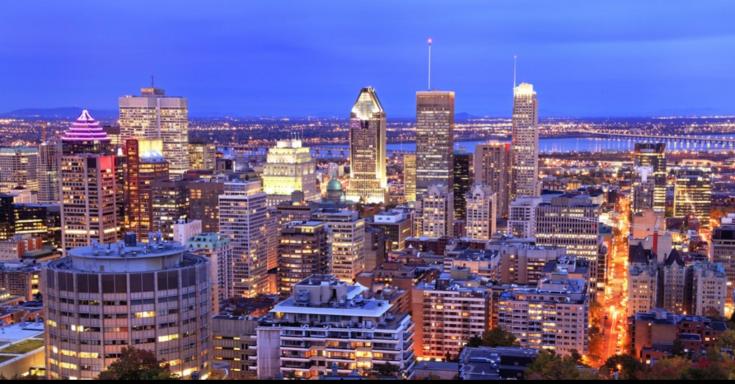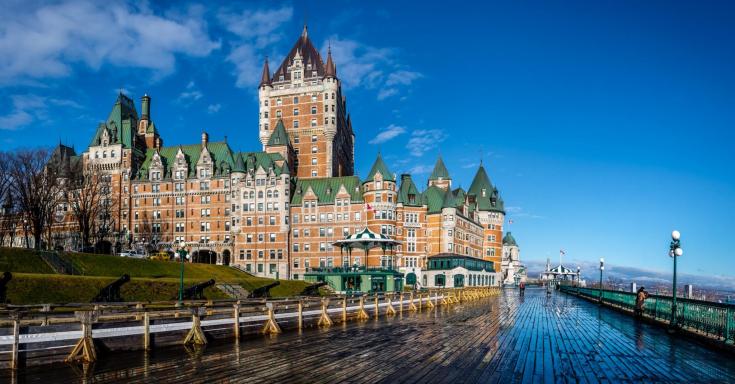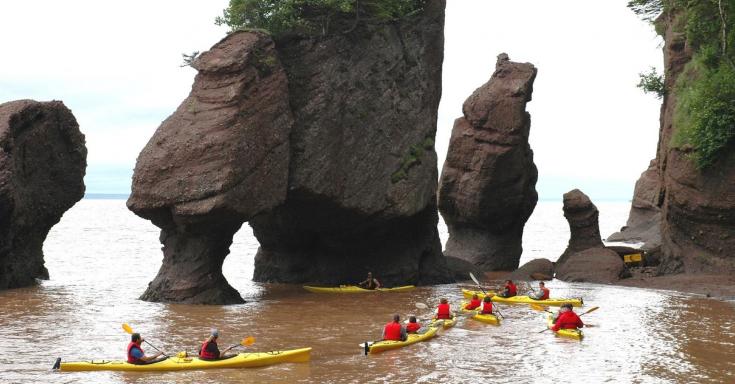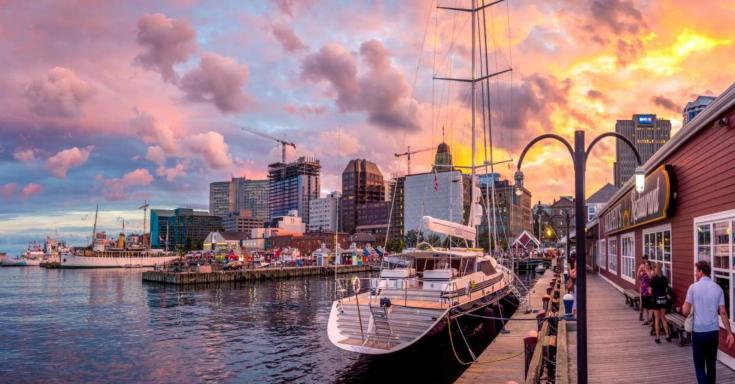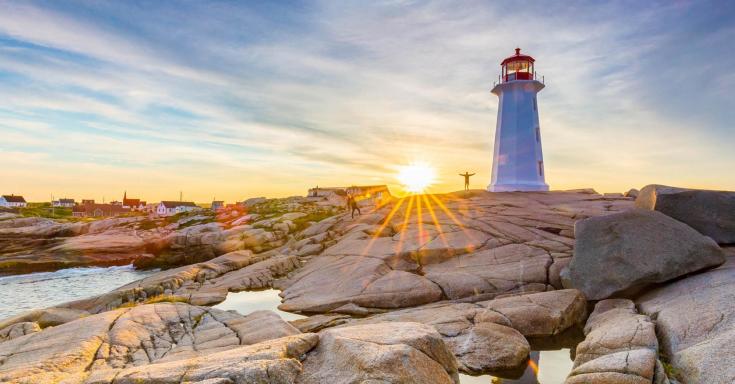|
|
|

 | Simo Jelača | |
| |
VALUABLES AND BEAUTIES OF CANADA
(EASTERN CANADA)
MONTREAL
Going from Ottawa to Eastern Canada, the first inn is certainly Montreal, the largest city in the province of Quebec and the second largest in Canada, with over four million inhabitants. Montreal hosted the World's Fair in 1967, during which the famous building "Habitat 67" was left to the city, as a symbol of the exhibition, and in 1976 the city hosted the Summer Olympic Games, too. Montreal has a very large number of restaurants, with all world specialties, and the largest number of them are of European style. Tourists are advised to definitely visit the old town house from 1870 in Montreal and see its beautiful interior of the Basilica, Notre Dame, and the beautiful castle of Jacques Cartier. In Montreal, the hosts will welcome you in every restaurant: "Hi" and "Bonjour", letting you know that you can speak English or French. The population of Montreal is mostly of French origin and in Montreal you will be greeted by certain changes in traffic rules, we must not turn right at the red light. The famous McGill University in Montreal is the first in Canada in the medical sciences. And Quebec is a province that produces 85% of the world's production of Maple syrup.
QUEBEC CITY
Quebec City is the capital of the province of Quebec, known as the cradle of French culture in Canada and as the "Gibraltar of America". The old part of the city of Quebec is under the protection of UNESCO as a world heritage site. It is located on cliffs about 100 m high. Quebec City has interesting museums, including the Musée de la Civilization, and restaurants with French cuisine. The upper town is dominated by the famous Chateau Frontenac hotel. The city of Quebec City has about 550,000 inhabitants, 95% of whom are of French origin, and a third of them also speak English.The road from Quebec City, further towards the cities of Eastern Canada, passes through several towns whose names begin with Saint: St. Lorenzo; St. Pascal; St. Alexandre; St. Antonin and others.
FREDERICKTOWN
Fredericktown is the capital of the province of Brunswick, located on the St. John River has, about 60,000 inhabitants, is one of the oldest cities in North America, and thousands of years ago it was inhabited by the Maliseet Indians. Every year, the city of Fredericktown hosts participants in the jazz and blues music festival, is the educational center of the province of Brunswick and specializes in many crafts and designs. It is a very pleasant city for hiking on beautiful trails and is considered one of the best places to live in Canada. Walking through the city of Fredericktown gives the impression of walking through history up to 3000 years ago. The city has a lot of restaurants, where you can enjoy the quality and taste of local food and listen to the stories from the life of Aboriginal people and their folklore. There are a lot of kiosks in the city where food is sold, home-made products, and even furniture. There are still covered bridges in Fredericktown, over a hundred years old, and one of the largest covered bridges in the world is Hartland, over 300 m long.
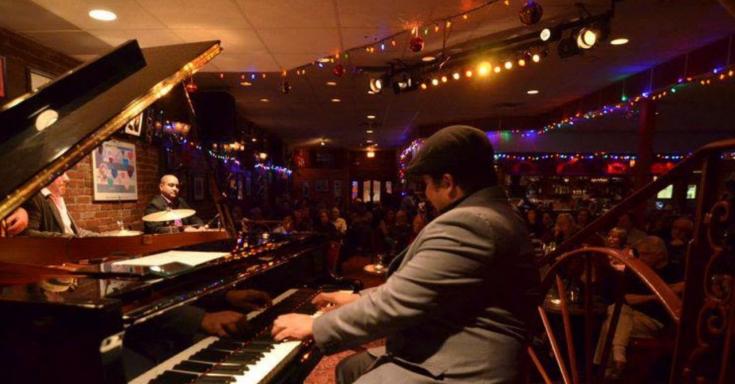
SAINT JOHN
St. John is the largest city in the province of Brunswick, about 110 km from Fredericton. It is known as “Fundy City” because of its location along Fundy Bay. The city has about 70,000 inhabitants, and is a regional economic and educational center. It is considered a world-class geological center in the world. This class includes the so-called. '' Reversing waterfalls'', Rockwood Park, Irving Nature Park, The Fundy Trail Parkway, The Norton Fossil Forest Center, Lepro the waterfalls and the Brunswick Museum. Opposite waterfalls during high tide force the water to flow upstream, on the contrary, while during low tide the water flows downstream.The city of St. John is known for its walking trails and the famous city market. The city is visited by about 1.5 million tourists a year.
FUNDY BAY
Fundy Bay is located between New Brunswick and Nova Scotia, known for its incredible tidal waves. In that bay, during high tide and low tide, the basins between high and low water levels are the largest in the world, reaching as much as 19 m. The rock formations along Fundy Bay (Hopewell Cape; Fundy National Park; Fundy Trail Parkway and Grand Manan Island) are very interesting, as natural wonders. Some sources claim that the name Fundy comes from the French word "Fendu", which means "split", while others think that it comes from the Portuguese word "Fanda", which means the thought "deep". Morni Park is under the protection of UNESCO, known for its very steep cliffs and waterfalls. Fundy Bay is 270 km long, funnel-shaped, which is divided into two parts, and the main one is "Chignecto", created millions of years ago. Between the rocks of both bays grow seaweed "Dulse", which dries in the sun on the rocks after picking. They are most often eaten raw and have a salty taste from sea water. Every day, during one tidal cycle, about 160 billion tons of seawater flows in and out of the bay. Lobsters, shellfish, mussels, smoked salmon and other types of fish are the perfect addition to enjoying a visit to Faudy Bay. And in addition to seafood, this area is rich in fresh fruits and vegetables as groceries in many restaurants. Whale watching is also available to tourists here, which is an exceptional attraction.
HALIFAX
Nova Scotia, a province of Eastern Canada, consists of the mainland and about 3,800 coastal islands, of which Cape Breton is the largest. The capital of Nova Scotia is Halifax, with over 400,000 inhabitants. The first inhabitants were the Niknaks Indians. Of the Europeans who immigrated, 80% are of British origin, and the remaining population are French, Germans, Dutch, Poles, Ukrainians, Scandinavians and, more recently, Chinese.There are 249 fruit processing plants in Nova Scotia, and lobsters are sent from here to all parts of Canada. The areas in Nova Scotia are mostly forested, so the pulp industry is also developed, and from here most of Canada is supplied with Christmas trees.The Peggy’s Cove lighthouse is attractive to tourists, as is the museum of Alexander Graham Bell, the inventor of the telephone. Fort Louisbourg is the largest fortification in North America. Halifax has an attractive gallery of paintings by artist Maud Lewis, colorful paintings of birds, flowers and butterflies, and the Maritime Atlantic Museum, as well as Linenburg, which is under UNESCO protection, are well visited. Halifax has one of the longest sandy walking trails in the world. Halifax is easily reached by plane, boat and car. The cost of living in Nova Scotia is about 90% of the cost in Canada.
PEGGY’S COVE
Peggy’s Cove is a gem of Canadian tourism, a small rural community on the east coast of St. Margaret Bay, known for the Peggy’s Point Lighthouse, built in 1868. The village was formally founded in 1811, when Nova Scotia leased more than 320 hectares of land free of charge to six German families, who first began fishing and raising livestock. And already in 1900, the number of inhabitants reached 300. Tourism took a significant advantage as an economic branch after the Second World War.
CHARLESTOWN
Charlestown is the capital of the province, Prince Edward Island (PEI), the birthplace of Canada. The city has only about 40,000 inhabitants and everything in it is within walking distance. The inhabitants call their island the "Garden of the Province'', since half of the island is arable agricultural land. All local deliveries are free, and product quality is guaranteed. It's really unique in Canada, so it's called "Welcome to Flower Island." The Northumberland Strait separates PEI from New Brunswick and Nova Scotia. In 1997, the 12.7 km long Zigzag Confederate Bridge was built, connecting the island with Brunswick. Charlottetown is the smallest capital city in Canada, but it is important as the place where the Federation of Canada was created in 1867. Red soil is rich in iron and is the best for growing potatoes, the best quality in the world. The population of PEI is about 145,000 of Scottish and Irish origin, and about 15% are French. The first occupants were the Micmac Indians. Agriculture is the main industry on the island, primarily the production of potatoes, followed by apples, blueberries, carrots, onions, tomatoes and cereals. In addition, the food industry is important for the processing of the mentioned agricultural products (bottling, canning and freezing). Tourism follows, followed by fishing. Lobsters occupy an important place in the total volume of fishing.
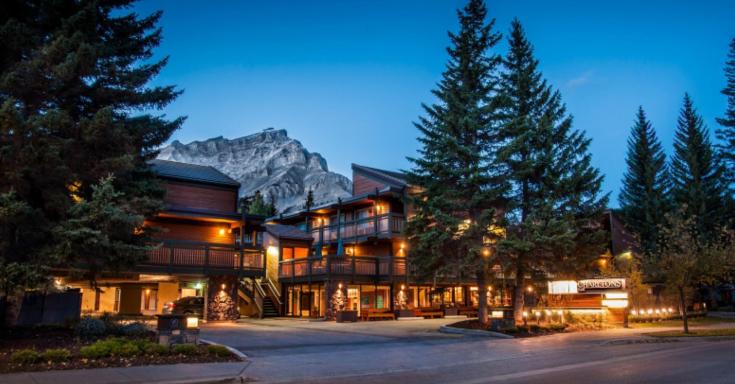
SAINT JOHN'S
St. John’s is the capital and largest city of Newfoundland and Labrador. It is considered the oldest English city in North America, located in the extreme south of the Avalon Peninsula, with about 212,000 inhabitants. It is the second largest on the Atlantic coast, behind Halifax. Water Street is considered to be the oldest street in North America, where sailors from all over the world meet when their ships stop. Oil in Newfoundland and Labrador accounts for 50 & economic revenue. Memorial University is the largest in the Atlantic region, with about 18,000 full-time and part-time students, employing 2,300 administrative and support staff and about 750 seasonal workers. They have a 125 km long walking trail (Grand Concourse), and George Street has the most cafes by area in Canada. The province of Newfoundland and Labrador is the largest province in Canada, 400,000 km2. The port of St Johns is best protected naturally, it is entered through a narrow passage (Narrows), 200 m, surrounded by cliffs, and then the port widens.
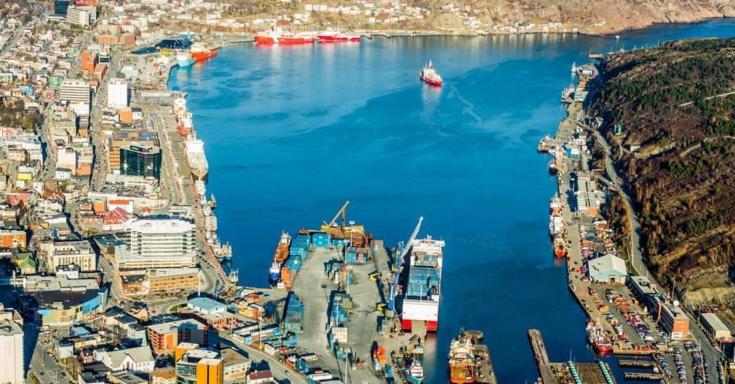
SIGNAL HILL
Signal Hill is a historic place on a rocky hill, in a harbor with a fantastic view over the Atlantic Ocean. This is the place where Guglielmo Marconi established the first transatlantic wireless signal in 1901, at a distance of 3200 km, according to the patent of Nikola Tesla.The intention of the author is to remind readers of the fact that the real father of wireless transmission was Nikola Tesla. (Read the book by Marc J. Seifer, The Life and Times of Nikola Tesla - Biography of a Genius, highly recommended by the American Academy of Sciences). It is known that Nikola Tesla applied for patents numbers 645576 and 649621 for the basics of radio on September 2, 1897, and they were granted to him in 1900. Marconi applied for patent number 763772 dated November 10, 1900, which was rejected. In addition, despite Tesla's lawsuit for patent forgery, Marconi received the Nobel Prize in 1911. The decision of the Supreme Court, case No. 6369 of June 21, 1943, states that Marconi's patent was invalid, and Tesla's patent took precedence. Unfortunately, for Tesla, personally, the court's decision came too late. He died five months before that, on January 7, 1943 (Read: Margaret Cheney - Nikola Tesla Master of Lightning). Tesla knew that Marconi used his coils, oscillators and the general project that Tesla explained in a lecture a few years ago.Dramatic cliffs and two lighthouses mark Cape Spear as the easternmost point of North America, located southeast of St. John’s. From here, from these cliffs, it is best to watch the sunrise, and your favorite routes are for watching icebergs and whales. There is a 540-kilometer-long walking trail on the east coast, which runs along the east coast of Newfoundland. This is a great way from where it is possible to see the beautiful landscape of the Avalon Peninsula. With its many restaurants and terraces, George Street is a popular downtown meeting place. In the evening, George Street is closed to traffic which makes it pleasant and picturesque for walks. Musicians usually play the violin and guitar and sing oceans - inspired songs. In the immediate vicinity of St. John's is a huge discovery of oil and natural gas, from where you can see the Hibernia platform and icebergs, over 10,000 years old. The economy of the local rural population is predominantly fishing, and their diet is mainly based on fish and venison.Hibernia is an oil field in the North Atlantic Ocean, about 315 kilometers east-southeast of St. John's, and 80 meters from the shore. Hibernia is the largest oil platform in the world and consists of 37,000 tons of construction mounted on 600,000 tons of base structure. The platform was towed to its final location, and 450,000 tons of solid ballast were added to secure it on site. Inside the platform are tanks for 190,000 m³ of crude oil for storage. Hibernia draws oil from a depth of 3720 meters. Engineering analyzes have confirmed that the drilling platform must be securely installed. Hibernia sits at the bottom of the ocean at a depth of about 80 m and with its top extends about 50 m above the water. The platform acts as a small concrete-steel island. The permanent crew consists of 280 people who spend 3 weeks on the platform and three weeks on land. They fly to and from the platform by helicopter.
|








